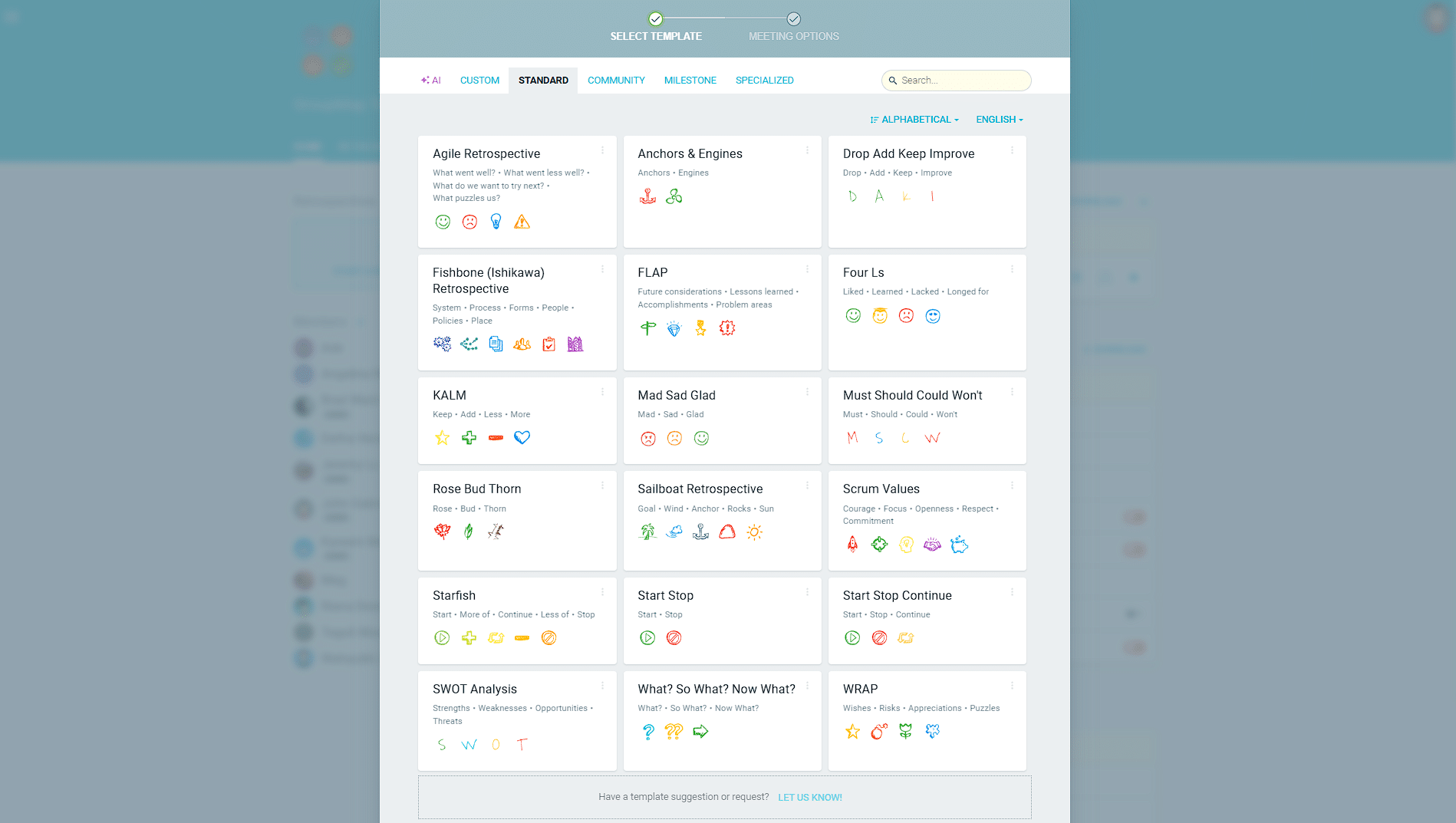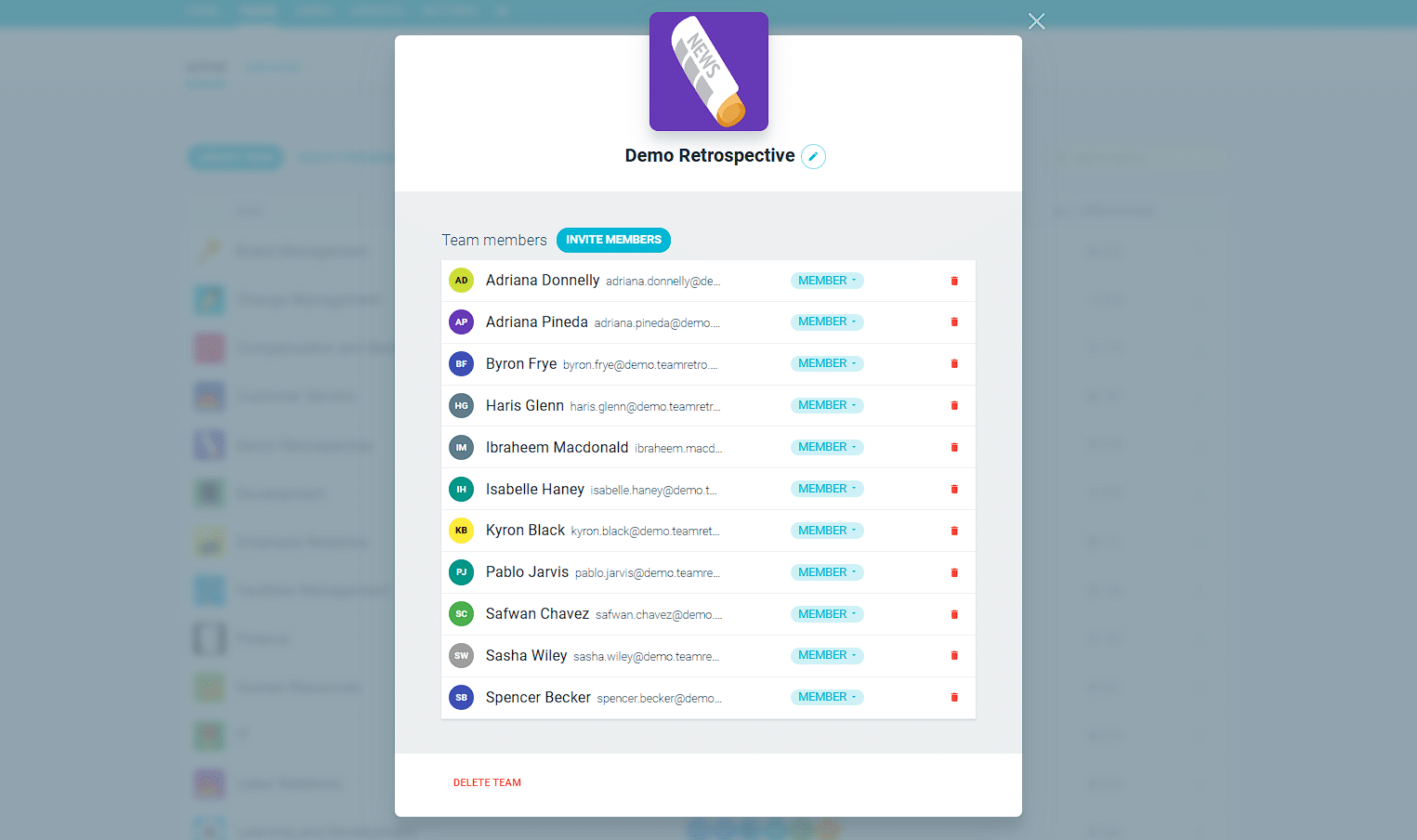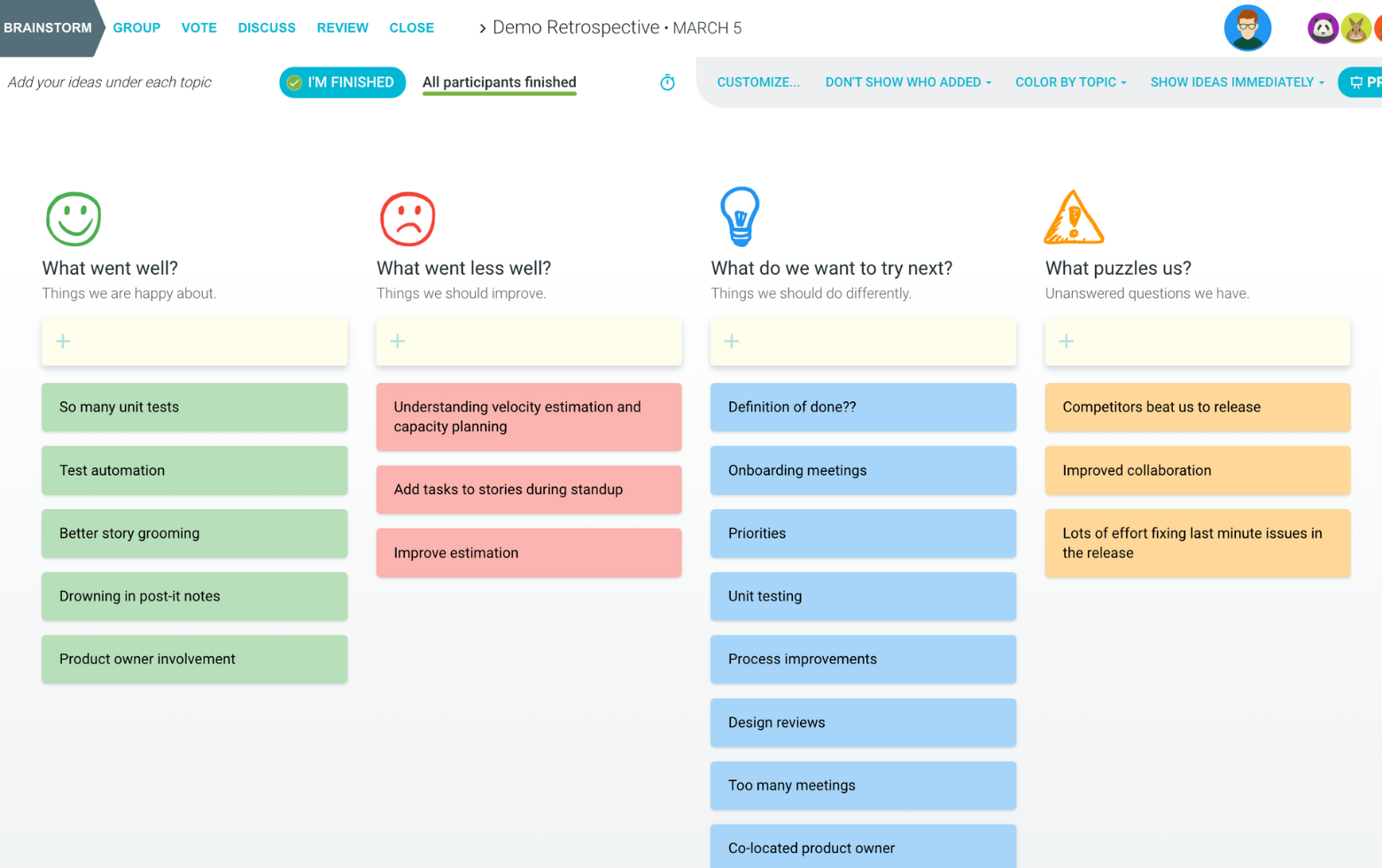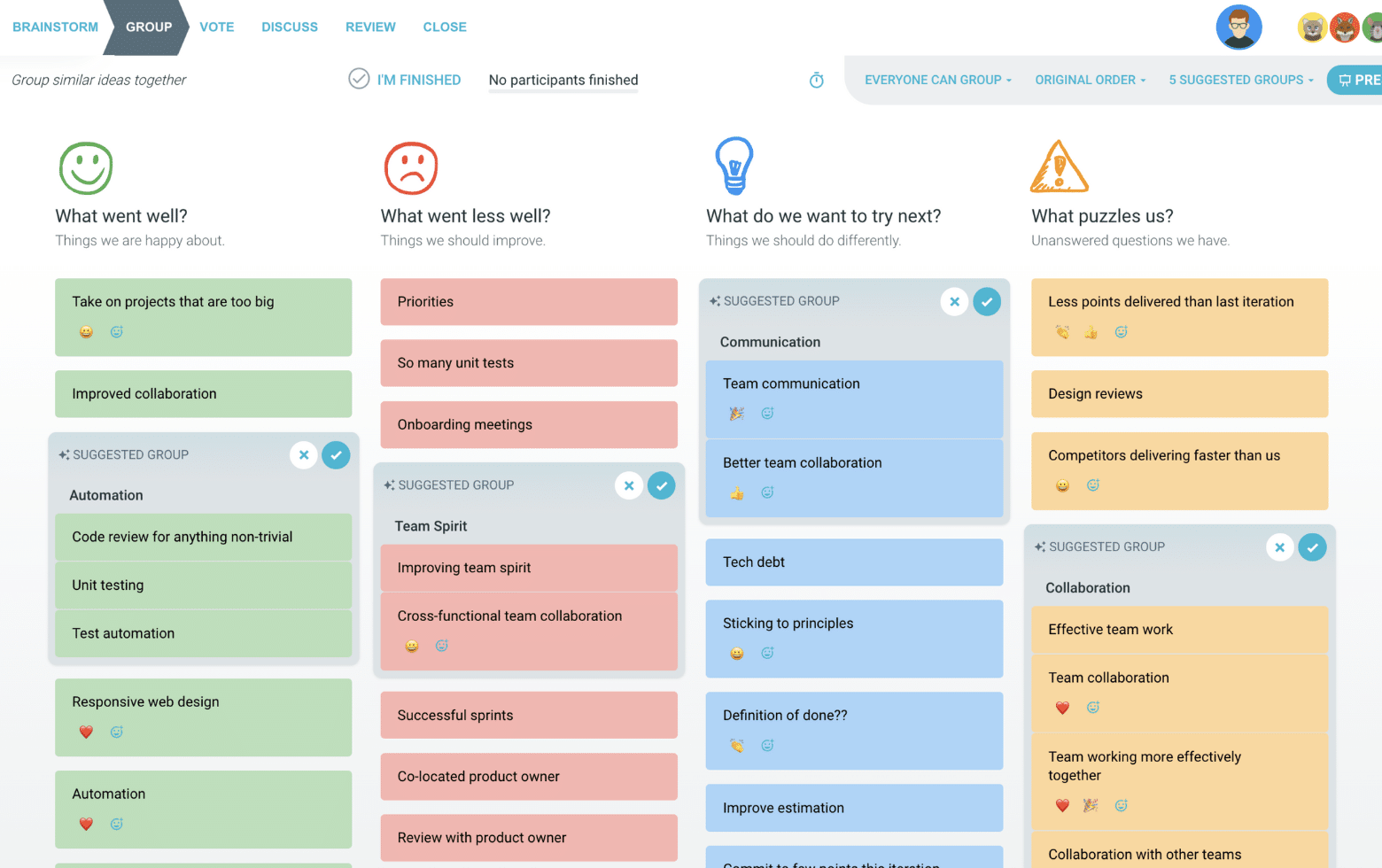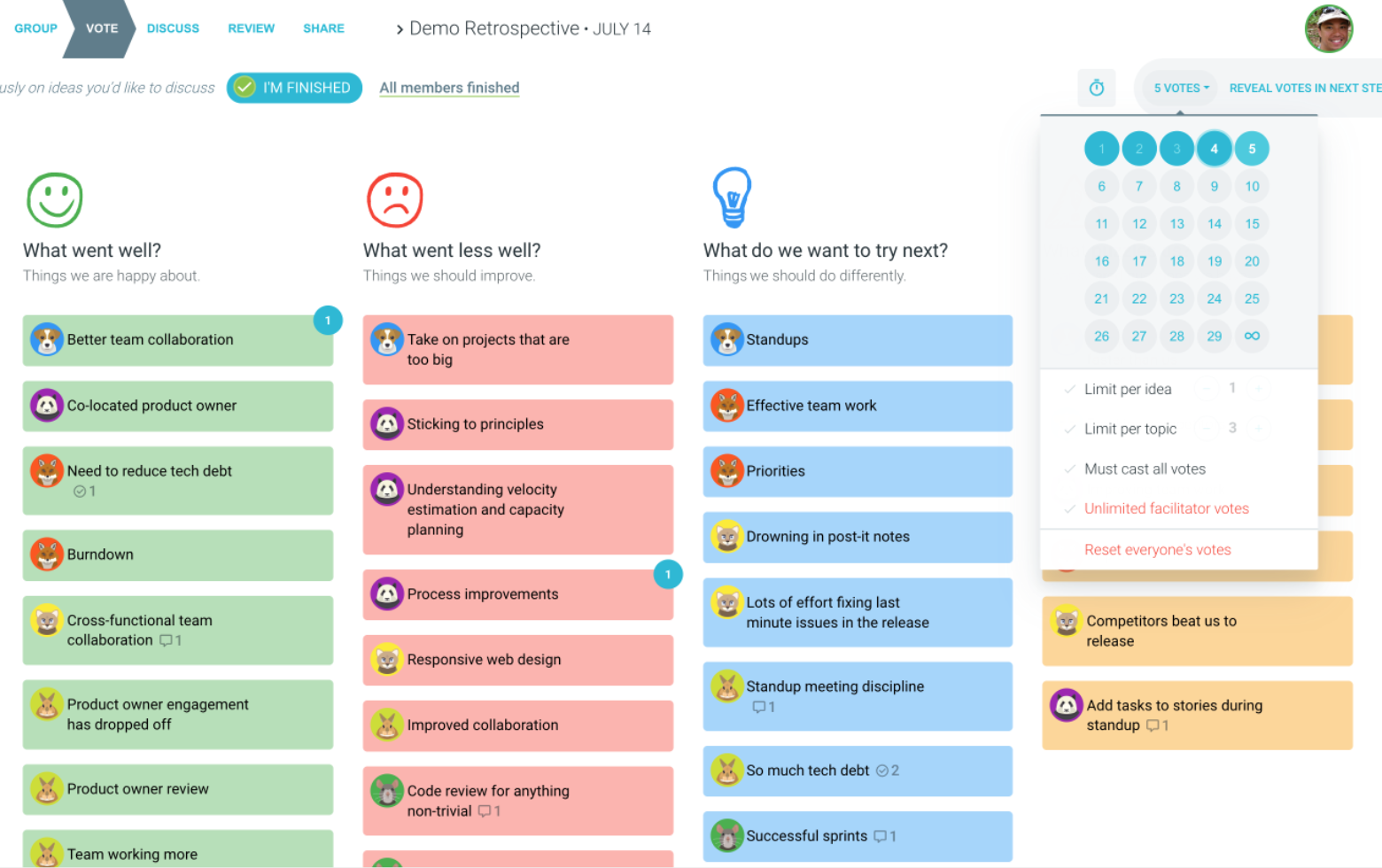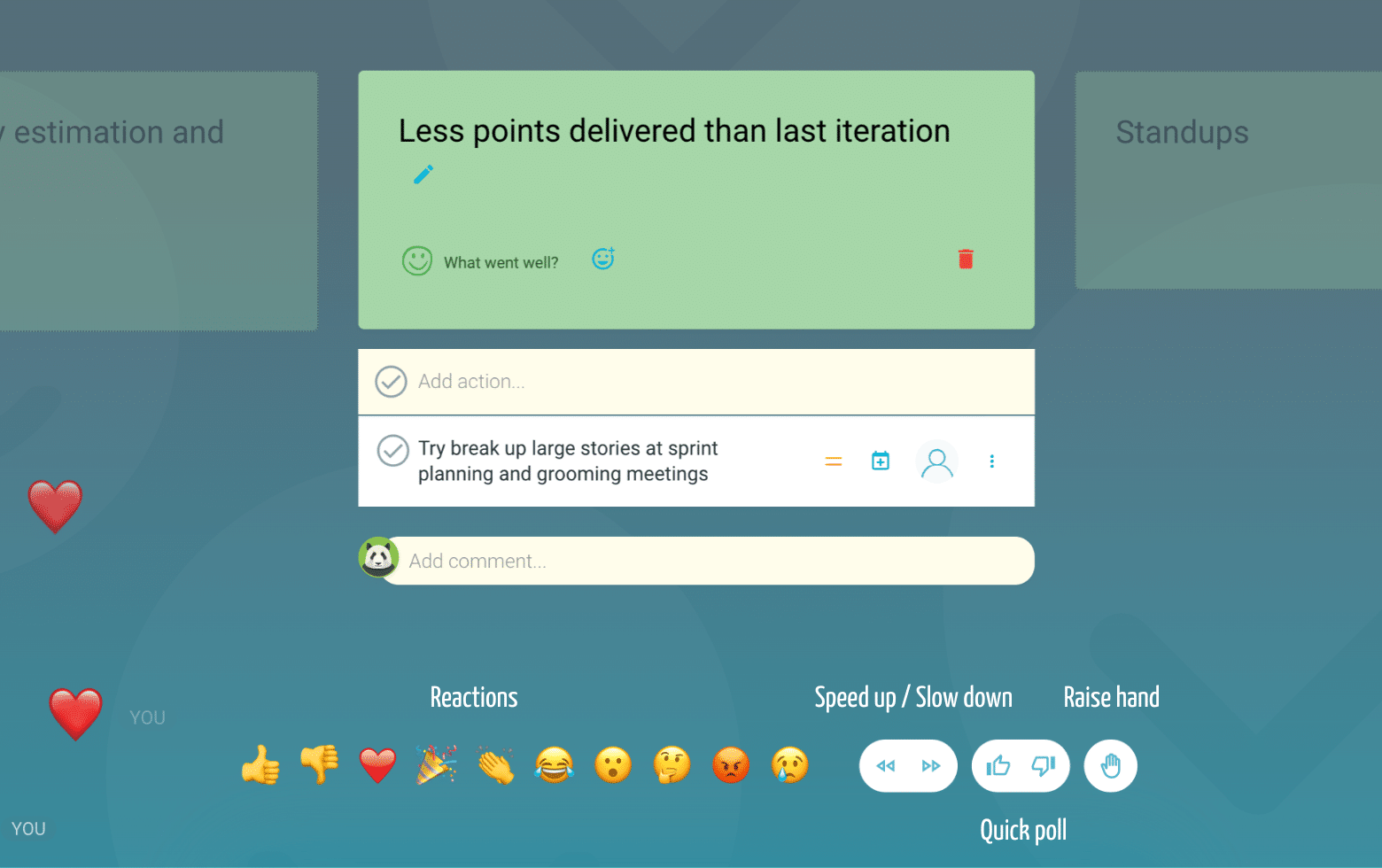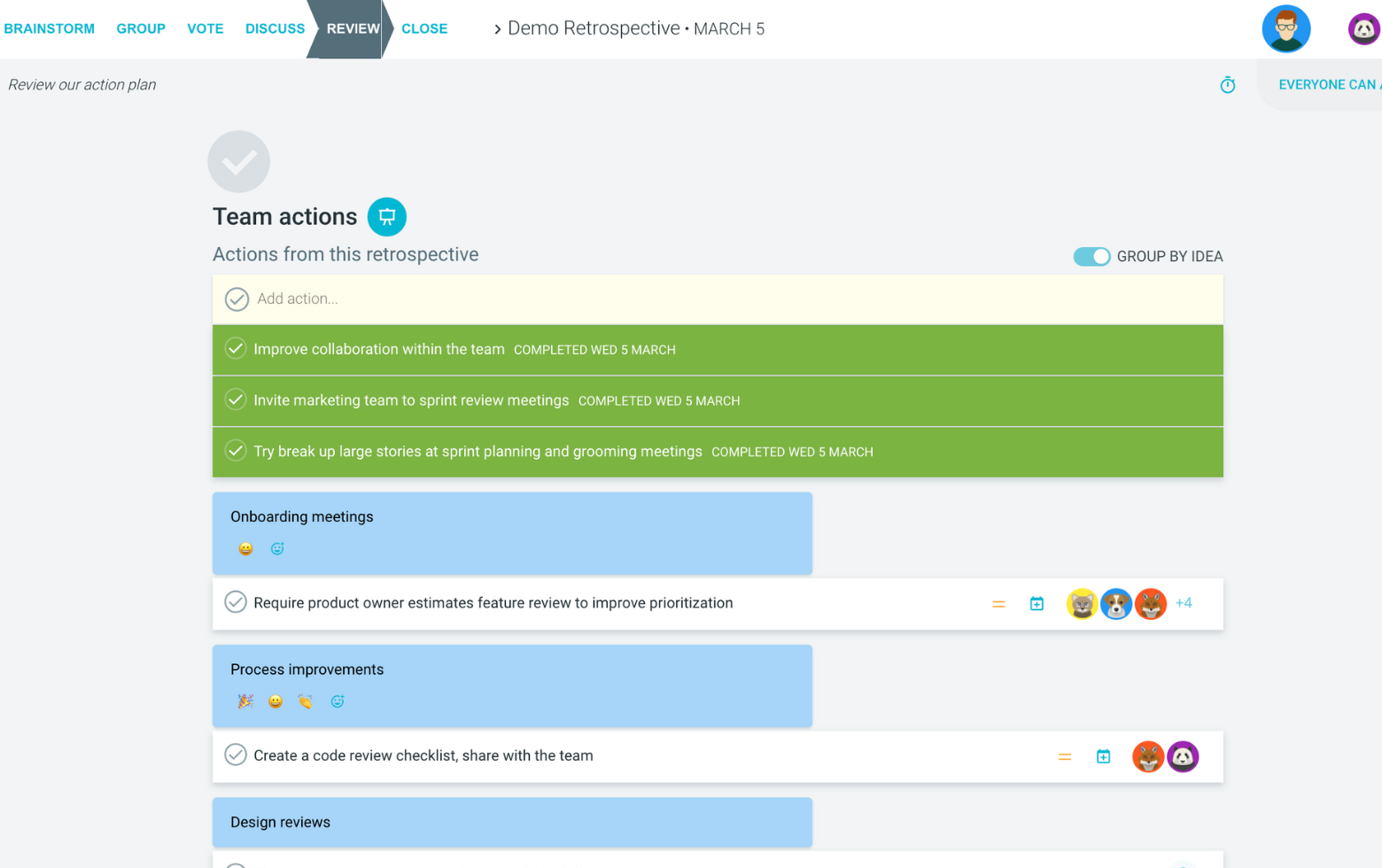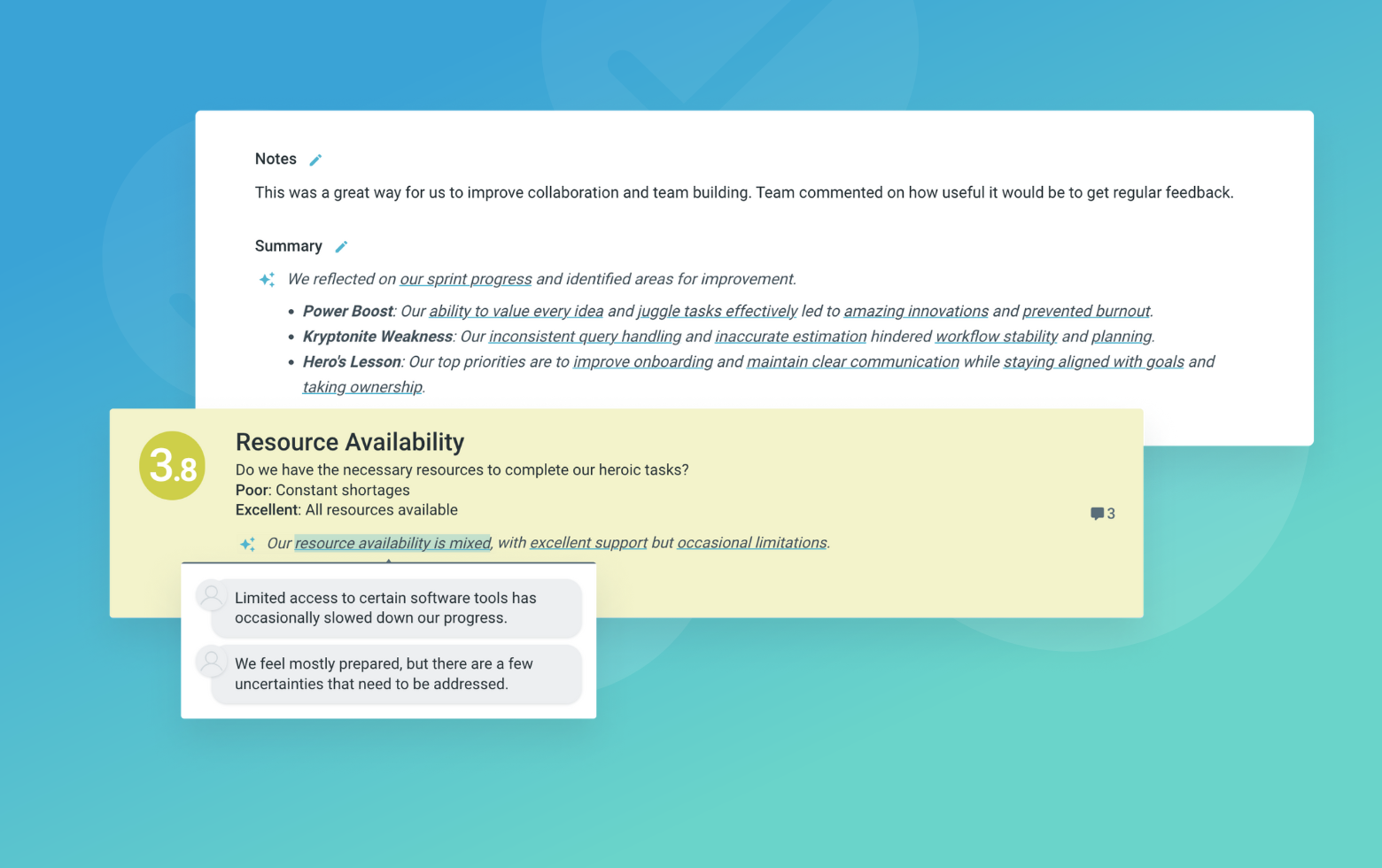The Oscar Academy retrospective transforms team reflection into an engaging awards ceremony format, celebrating achievements and learning opportunities through the lens of movie industry recognition. Drawing inspiration from the prestigious Academy Awards, this innovative approach encourages teams to acknowledge outstanding contributions and memorable moments from their recent work period.
Teams evaluate their experiences across four key categories: Best Performance (standout achievements), Best Actions (effective strategies), Best Story (learning experiences), and Best Supporting Roles (valuable resources and support). This format creates an atmosphere of appreciation while maintaining the serious purpose of continuous improvement.
By structuring feedback in this entertaining way, teams can overcome reluctance to share feedback and create a psychologically safe environment where both successes and challenges can be discussed openly. The familiar awards ceremony concept helps make the retrospective more approachable and memorable.
What is The Oscar Academy Retrospective
Best Performance
What should we shine a light on?
Guide the team to identify and celebrate standout achievements, breakthrough moments, and exceptional contributions. Encourage specific examples rather than general praise, and ensure recognition is distributed across different team members and aspects of work.
Best Actions
What contributed strongly to our outcomes?
Focus on identifying specific actions, processes, or decisions that led to positive outcomes. Help the team analyze what made these actions effective and how they can be replicated in future work.
Best Story
What stories did we learn from?
Encourage the team to share meaningful experiences that led to important insights or learning moments. These could be successes, failures, or unexpected situations that provided valuable lessons.
Best Supporting Roles
What tools, people or resources supported us?
Help the team recognize the often-overlooked elements that contributed to success. This includes tools, processes, external teams, or environmental factors that enabled better performance.
Suggested icebreaker questions
- If your last sprint was a movie, what would its title be and why?
- Which famous movie quote best describes your work this past week?
Ideas and tips for your retrospective meeting
- Consider creating physical awards or certificates to make the recognition more tangible and memorable
- Rotate the role of 'ceremony host' among team members to increase engagement and ownership
- Keep the tone light and fun, but ensure important lessons and feedback aren't lost in the entertainment
- Use movie-industry terminology to maintain the theme (e.g., 'That's a wrap!' to close the session)
- Consider adding sound effects or music to enhance the awards ceremony atmosphere
- Set a time limit for each 'award category' to maintain good pacing and energy
.
How to run effective meetings with TeamRetro
Start Your Session in a Click
Log into TeamRetro and choose your template. Customise questions and the workflow to create your perfect retro for your team.
Create Your Team Easily – No Separate Accounts Needed
Brainstorm Individually – Free From Bias
Smart Grouping for Faster Insights
Fair, Flexible, and Fast Voting
Engage, React, and Capture Key Insights
Walk your team through ideas one by one with Presentation Mode. Stay in sync, spark real-time discussions, and capture feedback with comments, live reactions, and polls—all in one place.
Turn Ideas Into Action
Propose next steps with team buy-in, get AI-powered action suggestions, and keep everything in one place. Committed actions sync to your personal dashboard and integrate with your workflow tools—keeping you on track.
Save, Share, and Stay on Track
Get quick AI-powered summaries, add facilitator notes, and store retrospectives in your library for easy access. Schedule your next session and track published actions to keep your team accountable at the next retro.
Turn Team Data into Actionable Insights
Uncover trends, common themes, and key engagement metrics at a glance. Track sentiment shifts, analyze conversations, and monitor completed actions to drive continuous improvement.
